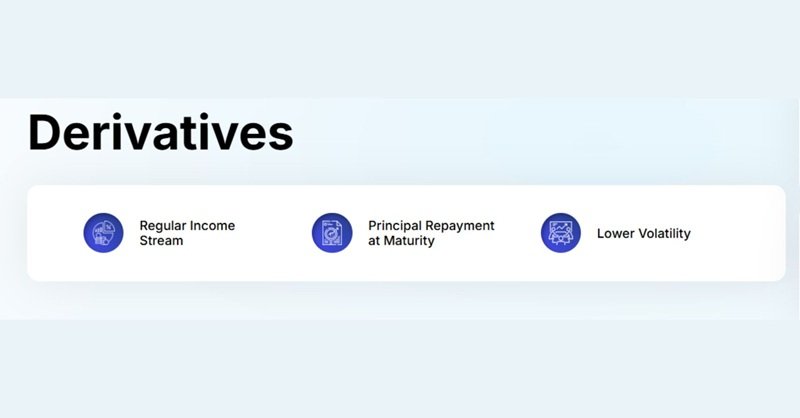Small-cap stocks refer to companies with a market capitalization of less than ₹5,000 crore in the Indian stock market. These stocks belong to growing businesses, often in their early stages, with the potential for high growth and exponential returns. While small-cap stocks can turn out to be multi-baggers, they also come with higher risks, including volatility, liquidity concerns, and limited financial disclosures.
Many investors are drawn to small-cap stocks due to their ability to outperform large-cap stocks in bullish markets. However, these investments require careful research and risk management. In this article, we will explore the advantages and disadvantages of investing in small-cap stocks.
Quick Overview: Advantages & Disadvantages of Small-Cap Stocks

| Advantages | Disadvantages |
|---|---|
| High Growth Potential | High Volatility |
| Multi-Bagger Returns Possible | Liquidity Issues |
| Lower Valuation Compared to Large-Cap Stocks | Limited Financial Information & Transparency |
| Less Institutional Influence – More Room for Price Discovery | Market Manipulation & Pump-and-Dump Risks |
| Diversification Opportunity for Aggressive Investors | Higher Risk of Business Failure |
Advantages of Investing in Small-Cap Stocks
1. High Growth Potential
Small-cap companies are in their early stages of development, which means they have significant room for expansion. If the company scales its operations and increases profitability, its stock price can grow exponentially.
For example, companies like Bajaj Finance and Eicher Motors were once small-cap stocks but later grew into large-cap giants.
2. Multi-Bagger Returns Possible
One of the biggest attractions of small-cap stocks is their ability to become multi-baggers, meaning they can multiply investors’ wealth several times over. Since these stocks trade at lower valuations, any positive developments—such as a business turnaround, innovation, or strong earnings growth—can cause their prices to skyrocket.
For instance, stocks like Deepak Nitrite and Astral Poly Technik delivered over 1,000% returns in a decade.
3. Lower Valuation Compared to Large-Cap Stocks
Small-cap stocks are often undervalued, as they do not receive as much attention from institutional investors and analysts. Investors who can identify strong companies early may find excellent investment opportunities at lower prices before the broader market recognizes their potential.
4. Less Institutional Influence – More Room for Price Discovery
Unlike large-cap stocks, where institutional investors dominate trading activity, small-cap stocks have lower institutional ownership. This means that retail investors have a better chance of investing in these companies before big institutions drive up the stock prices.
5. Diversification Opportunity for Aggressive Investors
Investing in small-cap stocks can help diversify a portfolio, as they belong to various emerging industries and sectors. While large-cap stocks provide stability, adding a portion of high-growth small-cap stocks can enhance overall portfolio performance in a bullish market.
Disadvantages of Investing in Small-Cap Stocks
1. High Volatility
Small-cap stocks are extremely volatile, as their stock prices can rise or fall sharply within short periods. A single negative news event or market downturn can cause significant losses. Investors should be prepared for wild price swings and the possibility of losing a substantial portion of their investment.
For example, during market crashes like the COVID-19 crash of 2020, small-cap stocks were among the worst hit.
2. Liquidity Issues
Many small-cap stocks suffer from low trading volumes, making it difficult for investors to buy or sell large quantities without affecting the price. This lack of liquidity can pose a problem, especially during a market downturn when everyone rushes to exit their positions.
3. Limited Financial Information & Transparency
Unlike large-cap companies, small-cap firms do not have comprehensive financial disclosures or analyst coverage. This lack of transparency makes it harder to assess their financial health and future growth potential. Many small-cap companies also have weaker corporate governance, increasing the risk of fraud or mismanagement.
4. Market Manipulation & Pump-and-Dump Risks
Since small-cap stocks have low market capitalization and liquidity, they are often targets for market manipulation schemes such as pump-and-dump scams. In such schemes, fraudsters artificially inflate the stock price by spreading false information, only to sell their holdings at a high price and leave other investors with losses.
For instance, multiple small-cap stocks have been delisted or severely devalued due to such manipulative practices.
5. Higher Risk of Business Failure
Many small-cap companies are in nascent stages of growth and may not have stable revenues or profits. There is a higher probability that some of these companies will struggle to survive, fail to scale, or go bankrupt due to poor management, high debt, or an unfavorable business environment.
Examples of small-cap failures include companies that were once promising startups but failed due to financial mismanagement or increased competition.
Who Should Invest in Small-Cap Stocks?
Small-cap stocks are ideal for:
- Aggressive investors who are willing to take risks for higher rewards.
- Long-term investors who can hold stocks for 5-10 years to benefit from their growth potential.
- Diversified investors who want to add high-growth stocks alongside large-cap stability.
- Stock market experts who can analyze financials and avoid risky companies.
However, they are not suitable for:
- Conservative investors who prefer stability.
- Retirees or income-seeking investors who need predictable returns.
- Short-term traders who cannot handle sharp price fluctuations.
Tips for Investing in Small-Cap Stocks Safely
1. Research Before Investing
- Study the company’s financials, revenue growth, profit margins, and debt levels.
- Avoid stocks with poor corporate governance or weak fundamentals.
2. Diversify Your Small-Cap Portfolio
- Invest in multiple small-cap stocks from different sectors instead of putting all your money into one company.
- This reduces risk if one or two companies fail.
3. Invest for the Long-Term
- Small-cap stocks take time to grow, so patience is key.
- Historically, good small-cap stocks have delivered massive returns over 5-10 years.
4. Avoid Stocks with Low Liquidity
- Always check average daily trading volumes before investing.
- Stocks with very low liquidity can be difficult to sell when needed.
5. Set Stop-Losses to Manage Risk
- Given the high volatility, setting a stop-loss can prevent heavy losses.
- A good rule of thumb is to limit losses at 15-20% from the purchase price.
6. Stay Updated on Market Trends
- Keep track of sector performance, government policies, and economic indicators affecting small-cap companies.
- Be cautious during market downturns, as small-cap stocks tend to fall more than large-caps.
Conclusion: Are Small-Cap Stocks Worth It?
Small-cap stocks offer the best chance for high returns, but they come with higher risks. They have the potential to turn small investments into significant wealth, but they also require strong research, patience, and risk management.
For long-term investors willing to ride out volatility, small-cap stocks can be an exciting addition to a diversified portfolio. However, conservative investors should be cautious, as the risks involved are much higher than in large-cap or mid-cap stocks.
Before investing in small-cap stocks, analyze fundamentals, check liquidity, and invest only what you can afford to lose. A well-researched and disciplined approach can help you identify the next multi-bagger stock while minimizing risk.
Anantha Nageswaran is the chief editor and writer at TheBusinessBlaze.com. He specialises in business, finance, insurance, loan investment topics. With a strong background in business-finance and a passion for demystifying complex concepts, Anantha brings a unique perspective to his writing.


